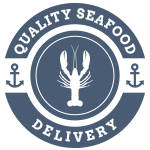The fishing season for salmon goes from late April to mid-October. Arguably, peak salmon season is from June to August in which pretty much every popular type of wild salmon is being caught and is available for sale. That said, due to the way this fish is prepared, the best time to buy salmon starts in early summer and goes through till the end of the calendar year.
Fishing Season for Different Types of Salmon
You can also find some general tips for buying salmon below, but first we wanted to provide a rough timeline of when different types of salmon are in season.
- King salmon: From late April to late June, this salmon will attempt to make its often very long journey upriver and upstream. Salmon season starts off with a bang with this top-shelf salmon variety.
- Sockeye salmon: From early June to late July, the very popular sockeye salmon dominates the Alaskan fishing industry. This fish can be caught in large quantities during this time period.
- Pink salmon: The season for pink salmon runs from late July to late August or even early September in some parts of Alaska. Peak season is the first half of August. This smaller variety of salmon usually doesn’t migrate as far. There is a relatively short window in which huge numbers of pink salmon are harvested.
- Keta salmon: Depending on where it’s caught, this type of salmon that is in season from late July to mid-October. Most Alaskan keta salmon runs occur from late July to early September. In some parts of the Pacific Northwest, you can catch keta salmon through the month of October.
- Coho salmon: A worthy end to salmon season, the medium-flavored and medium-fat coho is considered one of the premium varieties of salmon. Running from late July to mid-October, you can enjoy premium quality wild Alaskan salmon well into the following spring.
Tips for Buying Salmon in Season
- Understand the difference between fresh and frozen salmon. Fresh salmon isn’t better—at least not when “fresh” means unfrozen. The quality of the salmon meat will begin to deteriorate almost immediately upon being harvested. Even after being cleaned and cut into fillets, the salmon should ideally be eaten within a day or two at most. If you live in Alaska or the Pacific Northwest, you can enjoy truly fresh salmon. Otherwise, the best you can get is salmon that’s been cleaned, flash-frozen, and vacuum-sealed within hours of harvesting.
- For the same reason, don’t be afraid to buy in bulk. Salmon will last several months in its sealed packaging without any noticeable decline in quality. If you’re struggling to produce the delectable taste of wild Alaskan salmon, it may be due to improper storage and preparation. To thaw evenly, it’s important to remove the salmon from its sealed package. It may be necessary to allow for 12-24 hours to completely thaw, but then the salmon should be cooked within a day or two. It may also be necessary to experiment with your cooking methods and timing.
- While the salmon may remain safe to eat almost indefinitely if it’s continuously frozen, fattier varieties of salmon don’t last quite as long as before losing a bit of firmness to its texture. Most salmon will last 6 months or more in the freezer. King salmon is usually best when cooked within 3 months. Thus, even if you’re willing to pay more for wild king salmon, it probably makes sense to buy a more modest quantity and switch to other salmon species later in the year. If you do want to eat king salmon year-round, your best bet is likely to buy Ora king salmon, which is farm-raised in New Zealand but still considered to be of premium quality.
- Buy your salmon from a reputable company.
Learn about when other types of seafood are in season.
Take note of our Affiliate Relationships that may exist with this page and companies listed on it.

